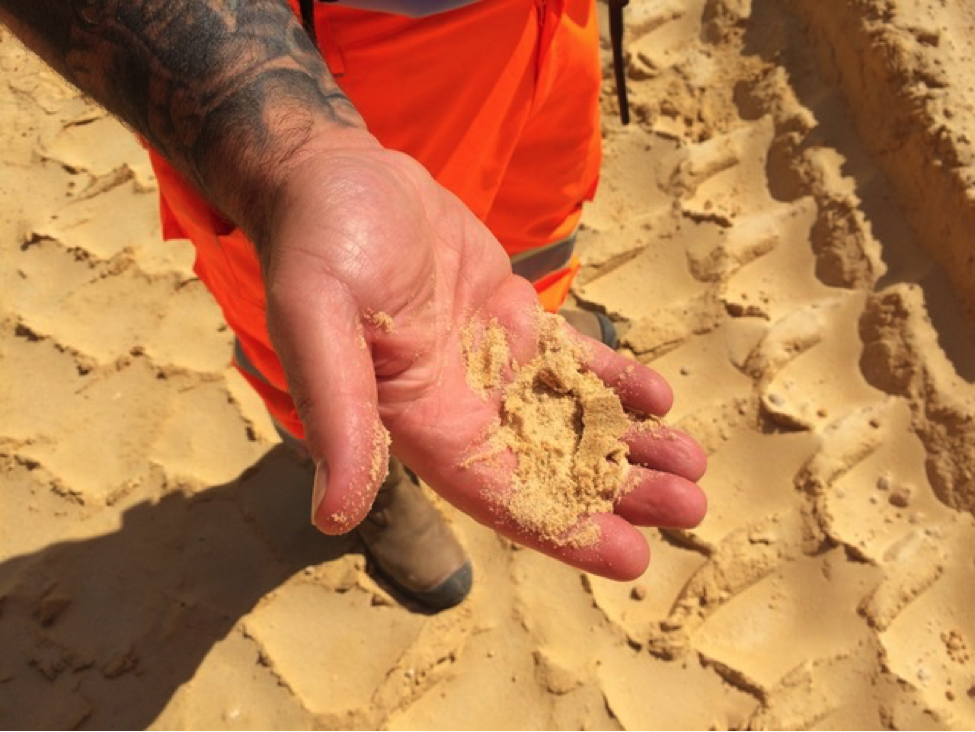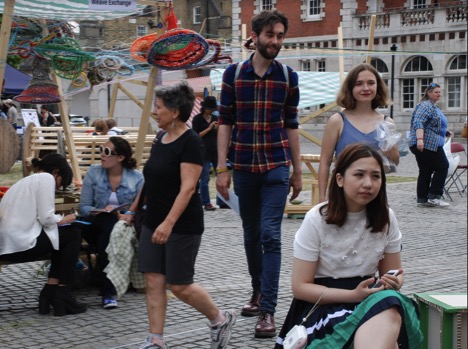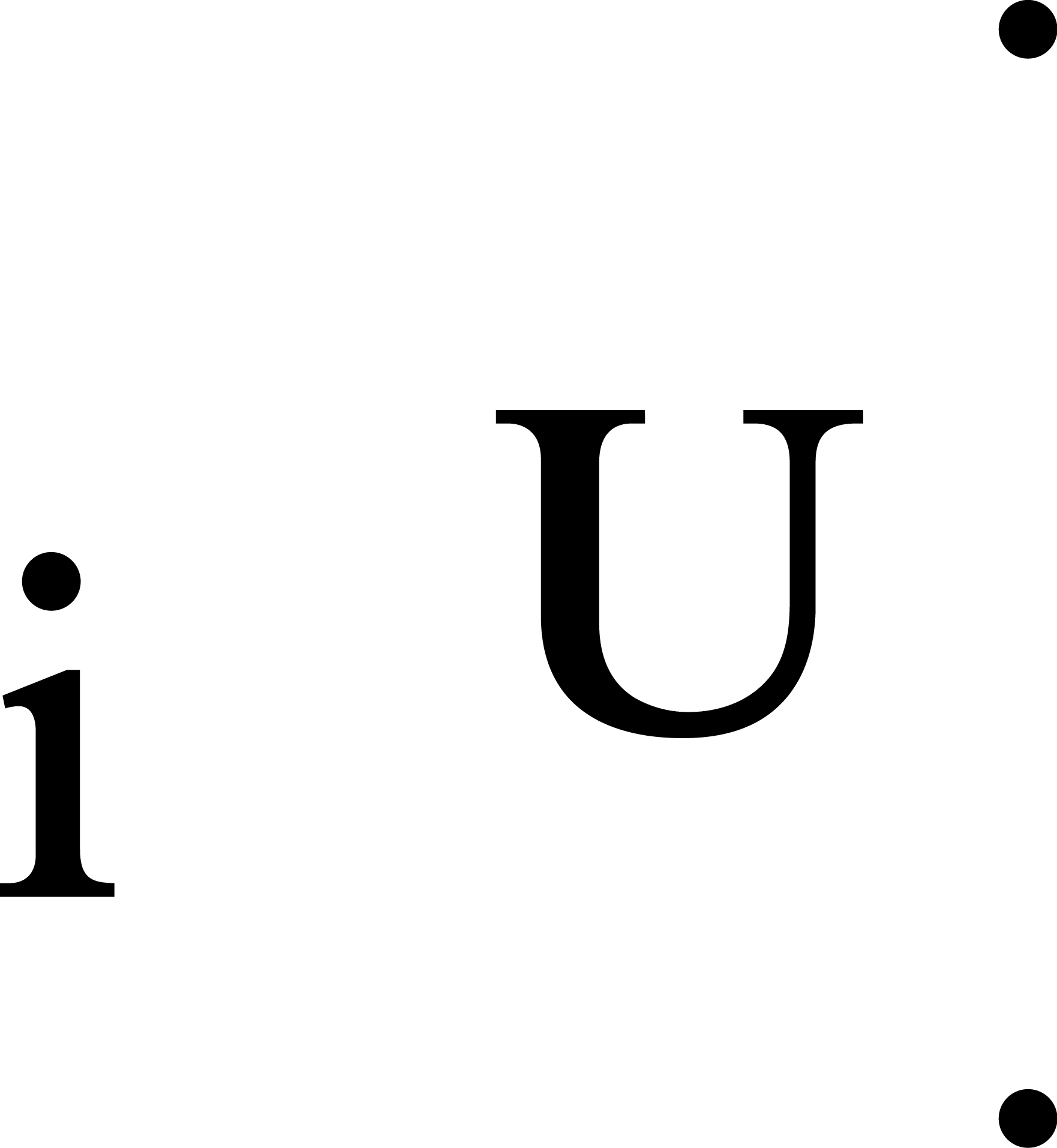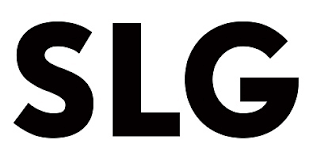Incidental Futures: Study Day and Incidental Assembly
at The Clore Studio, South London Gallery
13 & 14 September 2019
The Incidental Unit presents this two-day event to mark the culmination of the Incidental Futures programme.
On Friday 13 September a study day will explore historical examples of Artist Placement Group to consider how these experiments anticipated key challenges presently facing art, artists, the worlds of art and beyond.
On Saturday 14 September, a curated assembly will convene contemporary practices inspired Artist Placement Group. Activated by their artist practitioners, each instance will highlight the long-term impact of the Artist Placement Group on cultural production across the UK.
Artists: Michele Allen, Johann Arens, Charles Danby and Rob Smith, Corinna Dean, KALEIDOWORKS, Nicola Ellis, Simon Farid, Rob Flint, Amanda Loomes and Laura Purseglove.

Image Courtesy KALEIDOWORKS
From the whirlpool of change comes interest in creative practices that challenge conventional ways of doing and being. Faced with wicked problems and epic uncertainty, many of us who value culture are once again questioning the role of art in society and beyond. What work does it do? Where does it do this and, crucially, why, when and for whom? What value does this work create, both inside and outside of the cultural sphere?
It was questions like these that catalysed Artist Placement Group, one of the UK’s most critically acclaimed cultural networks. Founded by Barbara Steveni and others in 1966, this network of artists spent decades wrestling with the value of art to champion its potential beyond the studio, the gallery, the auction house and other sites of the so-called worlds of art. This began with positioning the artist in extra-artistic contexts. Exceptional experiments supported by Artist Placement Group took place in administration (government departments and public policy), industry (manufacturing and technology) and commercial enterprise (trade and urban renewal).
Some fifty years later, Artist Placement Group is again garnering critical interest. This includes Incidental Unit.[1] Since it began to form in 2016, this open and voluntary organisation has been led by the ideas of Artist Placement Group, meeting on a semi-regular basis at Flat Time House.
Since it began to form in 2016, this open and voluntary organisation has been led by the ideas of Artist Placement Group, meeting on a semi-regular basis at Flat Time House.
To celebrate the public launch of Incidental Unit, South London Gallery will host a programme of events. At the heart of these two days is the legacy of the Artist Placement Group. Exploring this impact across the UK contributes to global conversations about avant-garde experimentation and its drive to merge art and life by embracing cultural complexity and interrupting business as usual. Holding fast to the prospect that a return to historical examples affords new possibilities, we aim to extend the lineage of Artist Placement Group by working with new generations of practitioners, partners and other supporters. This line of descent has much to contribute to our understanding of compelling developments in critical contemporary art while priming the panoply of roles it might play in our futures.
On the one hand, this two-day programme opens up the group’s rich but unruly past to contemporary audiences and other publics; on the other, this is an invitation to all those influenced by Artist Placement Group to come and recognise/be recognised as a community of practice.
[1] Incidental Unit was galvanised in part by two recent and critically acclaimed retrospective exhibitions: The Individual and the Organisation: Artist Placement Group 1966-79 at Raven Row, London (2012) and Context is Half the Work: A Partial History of the Artist Placement Group at Kunstraum Kreuzberg / Bethanien, Berlin (2015) and at Summerhall, Edinburgh (2016).

Image courtesy Amanda Loomes
ARTIST PLACEMENT STUDY DAY
Friday 13 September 2019, 10 – 4pm
FREE, drop-in, no booking required
The Clore Studio and Orozco Gardens
Join the Incidental Unit to learn more about the history and methods of the Artist Placement Group. Facilitated sessions across the day will bring together newbies, enthusiasts and experts. Come for one or all of these discussions, with each focusing on a specific concern (see below). Everyone is welcome but booking is encouraged. Email [email protected] to reserve your place.
STUDY PROGRAMME:
11.00 – 11.45 - Context is Half the Work
12.00 – 12.45 - Incidentality & John Latham
13.30 – 14.15 - Artists in Industry: Giving Up and Giving Over
14.30 – 15.15 - What’s the Difference Between Placements and Socially Engaged Practice?
16.00 – 17.00 - Incidental Meeting: Unfinished Business, Taking Stock and Anticipating the Future
Sessions will start on time but may run into the break. Refreshments will be available from the cafe at South London Gallery. More info on the leaders will be available in early September.
This will be followed by the opening of Offer For Sale 6.30–8.30pm at Flat Time House

Image courtesy Marsha Bradfield
INCIDENTAL ASSEMBLY
Saturday 14 September 2019, 12 – 4pm
FREE, drop-in, no booking required
The Clore Studio and Orozco Gardens
Incidental Assembly will showcase examples of live practice that carry the DNA of Artist Placement Group. Selected through an open call, the eleven featured practitioners will work with the event’s publics to inspire action. This is based on diverse techniques, methods and other aspects that share a commitment to interrupting norms in law, health, industry, education, administration and more. Many of these draw upon concepts coined by the Artist Placement Group, such as the idea that Context is Half the Work or the figure of the Incidental Person.
Incidental Unit has commissioned 10 artists across the UK following a Call for Entries inviting practices to explore their relation to the methods of the Artist Placement Group. Below is a short preview of what visitors can expect by attending the Incidental Assembly.
Reflecting on John Latham’s Bings project, an outcome of his placement in Scotland, artist collaborators Charles Danby and Rob Smith will bring Lowick quicklime to London to offer new narratives between land use and industrial processes.
Stemming from a current placement at Ritherdon & Co Ltd., Lancashire, Nicola Ellis will invite the public to experience her role as an Incidental Person in her manufacturing context through product assembly activities.
Discover the potential of experimental, collective moving-image making in public space with Betsy Dadd of KALEIDOWORKS and consider the legacy of embedded projects by revisiting their 2017 ‘Playing Fields’ together.
Learn about artist Johann Arens’ collaboration with medical developer Dr. Alejandro Granados Martinez and their cross-disciplinary workshops for surgeons grounded in tactility.
Amanda Loomes will use a combination of personal anecdotes and expert knowledge, as artist and Civil Engineer, to activate objects and portfolios from her work in industry and open dialogues around social engagement, the culture of health and safety and other complex practices.
Michele Allen wonders what it means for nature to bear witness to industrialisation. Her ongoing engagement with an ancient woodland in Gateshead, alongside historical and archival research, asks questions about our relationship to the environment at a time of climate emergency.
Rob Flint will explore voice with a prepared text score and an ad hoc chorus of volunteers. Their collective reading will respond to Incidental Assembly and embody the Artist Placement Group’s motto, Context is Half the Work.
Those attending Incidental Futures are invited to join Curator Laura Purseglove in four sequential interdisciplinary conversations that are prompted by future scenarios authored by her collaborator, artist and poet Himali Singh Soin. Click here to find out more.
The demands of his day job as a gallery invigilator will make Simon Farid conspicuously absent from the assembly. This will highlight the tensions that organise the mixed economy of cultural production, which is a touchstone in Farid’s practice.
Drop-in event. All ages welcome. South London Gallery has step-free access throughout its exhibition spaces, Clore Studio, café, and gardens

ABOUT INCIDENTAL FUTURES AND INCIDENTAL UNIT
Incidental Unit (IU) was formed in 2016 following a series of incidental meetings with one agenda item, unfinished business. The aim of these meetings was to informally share information about the Artist Placement Group (APG) (1966-89), as well as its successor Organisation and Imagination (O+I) (1989-2009).
Conceived by Barbara Steveni and co-founded with Barry Flanagan, David Hall, John Latham, Anna Ridley and Jeffrey Shaw in London in the 1960s, Artist Placement Group sought to reposition the artist in society. The Incidental Unit reprises John Latham’s use of the term incidental and seeks to reignite and enrich debates around the role and work of the artist and inspire their critical and creative action.
This year marked the start of Incidental Futures as a public touring programme curated to discover the impact of original APG methods and to consider how they may be learned from and adapted today.
The two-day event at South London Gallery is a culmination of the six previous incidental meetings earlier this year that composed Incidental Futures (in Edinburgh, Liverpool, Birmingham, Bristol, Newcastle and Manchester). The London gathering in September 2019 also launches the future of Incidental Unit. We welcome new members and are seeking new opportunities, partnerships and other possibilities.
Incidental Futures is coordinated by Polly Wright and co-curated by Marsha Bradfield and Polly Wright. The organisers are grateful for generous support from other members of Incidental Unit.
Incidental Unit would also like to thank all the institutions that provided funding and support in kind to Incidental Futures: Arts Council England, Artfield Projects, Baltic 39, Bluecoat Gallery, Eastside Projects, Flat Time House, Keep it Complex,Manchester Art Gallery, South London Gallery, Spike Island, Summerhall, People’s Bureau, University of the Arts London, University of Westminster.
CONTRIBUTORS’ AND ORGANISERS’ BIOS
Michele Allen is an artist and researcher based in North East England. Her work has its roots in documentary and site-specific practice and frequently explores the relationships we form to place and environment. Allen often works collaboratively with communities and sometimes specialists from disciplines such as history, geography and social science. Her approach is interdisciplinary and she uses multimedia, incorporating photography, sound, video and archival research and has been exhibited as site-specific installations and in gallery settings. Allen has a PhD by photographic practice which she undertook in collaboration with the Locus+ Archive (an arts commissioning agency based in Newcastle upon Tyne). To progress and disseminate her practice-based research, the artist regularly presents at conferences across the UK. Alongside Allen’s artistic and academic work, she has a longstanding community arts practice (going back 24 years) which at times overlaps with and informs her art practice.
Johann Arens uses installation and video to survey the documentary properties of public interiors and their inherent social textures. These site-related interventions are enquiries into the multiple ways novel technologies device our communal life and shape civil behaviour. The deriving sculptural practice anatomises the role of mobile interfaces, the potential use value of artwork and the repercussions for the physical human body. Born in Aachen, Germany, Arens received his MFA in Fine Arts at Goldsmiths, University of London. Since then he has worked on public commissions assigned by Arnolfini / Art and the Public Realm Bristol, Letchworth Heritage Foundation, Jerwood Foundation London and Kettle’s Yard Cambridge. Recent exhibitions include Scenes of the World, Pump House Gallery, London (2019); Findings on Palpation, at P/////AKT in Amsterdam; digital_self, IMMA Irish Museum of Modern Art, Dublin and IFFR Rotterdam Film Festival (2018).
Gareth Bell-Jones (b. 1982) is the director and curator of Flat Time House, where he develops the exhibition programme, residencies, events, alternative learning platforms and manages the archive. From 2010-14 he was curator at Wysing Arts Centre, Cambridgeshire and he has also curated independent projects in the UK and internationally, at spaces such as ICA, London, and Nýlistasafnið, Reykjavik. He regularly writes catalogue texts for artists and is the editor of NOIT journal. Gareth is a cross department tutor at the Royal College of Art and an associate lecturer for MA Curating and Collections at Chelsea College of Arts. Bell-Jones has been part of Incidental Unit since its first incidental meeting in 2016.
Marsha Bradfield rides the hyphen as an archivist-artist-curator-director-educator-researcher-writer. Interdependence is the red thread that stitches together this cultural production. Bradfield’s international practice explores this theme variously, most recently vis-à-vis ‘the work of art and/as the art of work’. She is fascinated by plural ontologies, especially creative practices that are both useless and useful. Bradfield works with groups includingIncidental Unit and is co-curator of Incidental Futures. Collaborations like this often yield insights that Bradfield develops into accounts, alphabets, drawings, events, lectures, paintings, performances, publications, sculptures, sites, situations, sounds, systems, traces, walks, websites and more. In 2015 Bradfield founded Artfield Projects to provide art-related services and practice-based research. This builds on her work co-directing Pangaea Sculptors’ Centre (2013-2018). Born in South Africa and raised in Canada, Bradfield has been based in the UK since 2006 and affiliated with the University of the Arts London as a lecturer and researcher.
Charles Danby and Rob Smith have been working collaboratively since 2011. Their work explores site and land use in the transforming industrial landscape of the UK. It draws on histories and legacies of Land Art practices, exploring new approaches to site-based contemporary art making within the material and digital environments of bordered land sites such as quarries, islands, forests, and national parks. work uses video, photography, social practice and digital technologies alongside curatorial and archival approaches. It investigates the ‘forming’ and ‘becoming’ of site as time-based event structure. It presents a fluid 'distributed' model of site that extends through time, scale and location, proposing plural possibilities of new relationships between human/ non-human and site/non-site.
Corinna Dean founded ARCA in 2014, the Archive for Rural Contemporary Architecture, which is an open source archive to encourage participation from the bottom up, as well as re-engaging cold war structures and other architectural typologies in a rural context. She is engaged in looking at these sites through ideas of local ecologies and ‘deep time’. Most recently she produced a body of work based on subterranean air raid shelters casting the spaces at various scales at Bankside called Trace, and is carrying out a residency with the Sheerness Dockyard Trust on the Isle of Sheppey. She has exhibited Bankside-on-Call in the Bankside arches working with the Bankside Open Space Trust when carrying out a PhD with Tate Modern and LSE, as well as Embassy Gallery, Scotland and the RIBA Gallery, and Blue Town Heritage Centre, Sheerness.
Nicola Ellis is interested in the properties, value, function and circulation of materials. With a current focus on metals and the companies that work with them, Ellis’ work draws on the visual and spoken language of industry operations, fabrication and profiling processes. The parameters for her sculpture, installation, drawings and videos include relationships between people, businesses and technology. Materials and knowledge are often loaned or traded; they become a kind of currency. Ellis is currently undertaking the two year project ‘Return to Ritherdon’ which is built around a two year residency at Ritherdon & Co Ltd, a manufacturer of metal enclosures based in Darwen, Lancashire UK.
Simon Farid is a sometime artist and moretime art gallery security guard based in London. He is an overt surveillance worker, embedded within an art institution, subject to its hierarchies. Like many of his co-workers, he considers himself a practicing artist. This leaves the institution in the curious position of having lots of super interesting, creative people silently standing in rooms for them. Experiencing this led Farid to experiment with a number of tactics exploring ways of working together, exhibiting art and running institutions in a more horizontal way: 1. Collaborating with some of his guarding colleagues on really exciting performance and [REDACTED] 2. Collaborating with some other colleagues in a public art/guarding group called the ‘Invigilator Research Network’ - invigilatorresearch.org/fashionsurvey/ 3. A personal practice concerned with these topics - simonfarid.com/towards
Rob Flint’s practice explores the voice, and how it engages with power. Past collaboration with Christine Sullivan used verbal description to evoke absent objects in performances like: The Thing Is at Motorcade FlashParade in Bristol (2012), and Conversation Piece in the show Hlysnan in Luxembourg (2015), where the artists narrated their experience of viewing films hidden from the gallery audience.
A residency project with curator Jennie Syson in 2016-17 culminated in shows in Nottingham and London, under the title The Authorities, exploring aesthetics of commandment and instruction through sculpture, sound and moving image. Related works were screened in TBCTV at Somerset House in October 2018. Recently Rob has been using text scores as a way of choreographing spoken word performances with volunteer groups in participatory actions such as: Sky Blue, Hyson Green at Nottingham’s New Art Exchange, and Like Work in the Research Pavilion in the 2019 Venice Biennale.
Artist duo Kaleidoworks use experimental moving-image, sound, drawing and installation with diverse community groups, exploring the intersection of community and public space. Previous projects include: Films for the Future, South London Gallery (2016-19) ; Grey Area, Camden Arts Centre (2017-19); Zeitgeist, Battersea Arts Centre (2018); Soft House Noisy House, Camden Arts Centre (2018); Playing Field, Reading Room, Create Pembrokeshire (2017); STOP PLAY PAUSE, Space to Play Symposium, Foundling Museum (2017); Future Floor, V&A (2017). Voice of Children is a research film made collaboratively with Assemble exploring international adventure playgrounds and children's democratic spaces and has been installed at the Arsenale, Venice Architecture Biennale (2016), The Baltic Centre of Contemporary Art Newcastle (2016); and Now Play This, Somerset House (2019).
Amanda Loomes watches other people at work and listens to what they have to say about the world. She can often be found exploring the primary industries, heading out to sea on an aggregate dredger, or considering production lines such as Johnston road sweepers or Peter Beales roses. Loomes is particularly moved by the effort of people whose work goes unnoticed or that is difficult to see, work that becomes erased or undone. She uses the experimental documentary forms to consider the frailty and resilience of human endeavour, imbuing materials and places with the stories of the people they where made by. Her recent solo exhibition, Formation Level, at Aspex Gallery, explored her former life as a civil engineer through the labour and materials embedded in roads. She is currently showing The Custody Code, a film installation with the Forestry Commission as part of their centenary celebrations.
Laura Purseglove is a creative producer who focuses on off-site projects. She currently leads Radar, Loughborough University’s contemporary art commissioning programme which facilitates interdisciplinary collaborations between artists and researchers. Current projects include Bodies of Knowledge, a series of artist-led workshops exploring the body as a site of knowledge production, and a series of commissions exploring interconnections between ecological, political, social and financial risk. This chimes with her contribution to Incidental Assembly, a collaboration with artist and poet Himali Singh Soin which explores language, uncertainty and futurity via deliberative workshop session. Purseglove's interests include the role of narrative and dialogue in contemporary art projects and the reframing of artistic practice as research.
Born in Iran, Barbara Steveni is a British conceptual artist, who in 1966 conceived and co- founded the Artist Placement Group (APG), which has been described as ‘one of the most radical social experiments of the 60s’. Throughout the Happenings of the 60s and 70s Steveni worked with the Fluxus art movement, Joseph Beuys, Yoko Ono, John Latham amongst others. Steveni’s original concept for APG was to expand the reach of art and artists within a wider social context. More recently, Steveni’s I AM AN ARCHIVE (IAAA) (2002-ongoing) gathers artists and professionals across three generations in a series of participatory and documentary walks, taking place on sites of original APG placements, exploring the potential to reactivate the methodology today; creating an evolving archive that draws together memories, embodied dialogue, oral histories and exchanges in society. Continuing this theme, Conversations Between Ourselves is an ongoing series of filmed conversations with women, seen/unseen who have shared Steveni’s art-life journey.
Polly Wright develops curatorial projects and public programmes both independently and for organisations. Currently, she is Programme Coordinator for Incidental Futures and Programme Producer at Brighton CCA, exploring cross-disciplinary research and practice. Recently, she has undertaken an MA at the Dutch Art Institute, and is continuing to create strands of practice about experimental education, performance and close collaborations.
